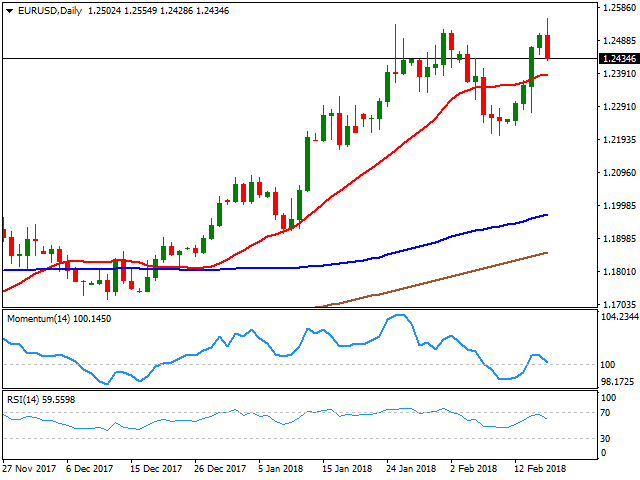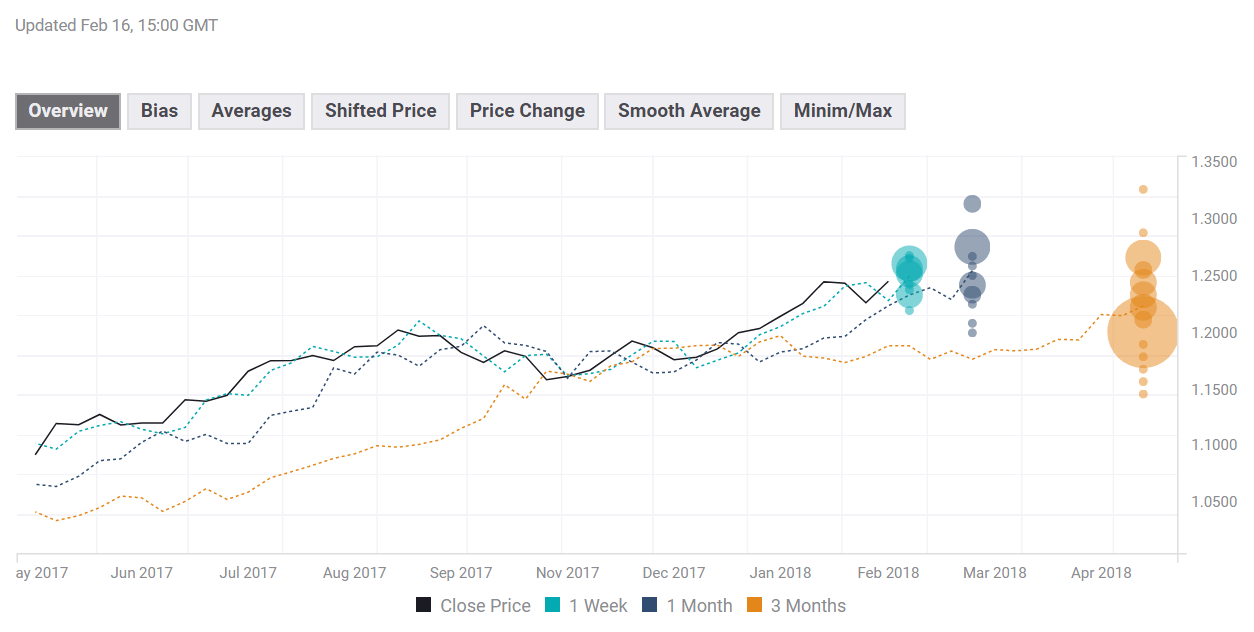- Ballooning US deficit to maintain investors away from the greenback.
- Wall Street recovered, but got closer to an inevitable collapse.
Dollar's bears came back with a vengeance and pushed the currency to fresh multi-year lows against the common currency and the yen, in another high-volatile week, where Wall Street swings led the way for currencies.
It's hard to explain why, after an uptick in wages triggered a 1,500 slump in Wall Street, better-than-expected CPI figures had the opposite effect, as after the release of US CPI, US jumped higher. As commented last week, USD problems are no longer a matter of when, or by how much the Fed will raise rates this year. Political jitters have largely offset the benefits of a tighter monetary policy in the world's largest economy.
I read somewhere this week something like sounded quite logical, attributing the latest bounce in Wall Street to the desperation over facing the effects of a stocks' collapse, and the fact that there's nowhere else to go with the money. I can't but agree with that view that at this point, is better to re-buy than letting the whole market collapse. The thing is that at this point and in this scenario, its moving toward an inevitable collapse, the "due correction" after eight years of steady run.
The so cheerfully welcomed tax cut is backfiring, as the US Government had to approve an emergency funding plan meant to prevent another shutdown, but with the side effect of a ballooning budget deficit, estimated to reach $1 trillion next year. And that's just the tip of the iceberg.
The EUR/USD pair jumped to a fresh 3-year high of 1.2554 this Friday, shedding over 100 pips ahead of the close, helped by positive US data but mostly on profit taking ahead of a long weekend as Monday will see Japanese and American markets closed on holidays.
This upcoming week will bring little new from the macroeconomic front, with no first-tier releases, which means that currencies will continue taking clues from equities.
Technically, the pair is bullish in its weekly chart, as it held well above all of its moving averages, with the 20 SMA far above the larger ones, but over 500 pips below the current level. Technical indicators in the mentioned chart have resumed their advances after correcting overbought conditions, with the Momentum indicator challenging their recent highs.

In the daily chart, the pair seems to have started drawing a double top around 1.2540/50, although the neckline of the figure, which will confirm the formation is the low set on February 9th at 1.2205. In the same chart, the pair settled above the 20 DMA, which losses upward strength and currently stands at 1.2390, while technical indicators eased, the Momentum nearing its 100 level, but the RSI still closer to overbought readings, somehow indicating that, while the current downward correction may continue, the pair is far from bearish.
The mentioned 1.2390 level is the immediate support ahead of 1.2300, while below this last 1.2205 comes next. Resistances, on the other hand, came at 1.2500, and 1.2569, this last December 2014 monthly high. Beyond it, the pair has room to extend its gains toward the 1.2600/20 region.
The FXStreet Forecast Poll shows no relief for the greenback in the coming weeks, as bulls took over the EUR/USD pair. For the upcoming week, bulls are 67%, against just a 36% in the previous one, with the average target now roughly 200 pips higher. In the 1-month perspective, sentiment toward the pair shifted from neutral to bullish, with the pair seen around 1.2540. Uncertainty benefits the greenback in the longer run, with bears becoming a majority in the 3-month view, up to 66% from previous 56%, although from an average target of 1.2143, the market is now pointing to 1.2228.
The Overview FXStreet Chart offers quite a bullish scenario in the three time-frame under study with a clear bullish trend and large accumulations of higher targets, particularly in the weekly and the monthly view, although the momentum eases in the longer term, with most analyst pointing to levels around the 1.2000 figure.

Information on these pages contains forward-looking statements that involve risks and uncertainties. Markets and instruments profiled on this page are for informational purposes only and should not in any way come across as a recommendation to buy or sell in these assets. You should do your own thorough research before making any investment decisions. FXStreet does not in any way guarantee that this information is free from mistakes, errors, or material misstatements. It also does not guarantee that this information is of a timely nature. Investing in Open Markets involves a great deal of risk, including the loss of all or a portion of your investment, as well as emotional distress. All risks, losses and costs associated with investing, including total loss of principal, are your responsibility. The views and opinions expressed in this article are those of the authors and do not necessarily reflect the official policy or position of FXStreet nor its advertisers. The author will not be held responsible for information that is found at the end of links posted on this page.
If not otherwise explicitly mentioned in the body of the article, at the time of writing, the author has no position in any stock mentioned in this article and no business relationship with any company mentioned. The author has not received compensation for writing this article, other than from FXStreet.
FXStreet and the author do not provide personalized recommendations. The author makes no representations as to the accuracy, completeness, or suitability of this information. FXStreet and the author will not be liable for any errors, omissions or any losses, injuries or damages arising from this information and its display or use. Errors and omissions excepted.
The author and FXStreet are not registered investment advisors and nothing in this article is intended to be investment advice.
Recommended Content
Editors’ Picks
AUD/USD jumps above 0.6500 after hot Australian CPI data

AUD/USD extended gains and recaptured 0.6500 in Asian trading, following the release of hotter-than-expected Australian inflation data. The Australian CPI rose 1% in QoQ in Q1 against 0.8% forecast, providing extra legs to the Australian Dollar upside.
USD/JPY hangs near 34-year high at 154.88 as intervention risks loom

USD/JPY is sitting at a multi-decade high of 154.88 reached on Tuesday. Traders refrain from placing fresh bets on the pair as Japan's FX intervention risks loom. Broad US Dollar weakness also caps the upside in the major. US Durable Goods data are next on tap.
Gold price cautious despite weaker US Dollar and falling US yields

Gold retreats modestly after failing to sustain gains despite fall in US Treasury yields, weaker US Dollar. XAU/USD struggles to capitalize following release of weaker-than-expected S&P Global PMIs, fueling speculation about potential Fed rate cuts.
Crypto community reacts as BRICS considers launching stablecoin for international trade settlement

BRICS is intensifying efforts to reduce its reliance on the US dollar after plans for its stablecoin effort surfaced online on Tuesday. Most people expect the stablecoin to be backed by gold, considering BRICS nations have been accumulating large holdings of the commodity.
US versus the Eurozone: Inflation divergence causes monetary desynchronization

Historically there is a very close correlation between changes in US Treasury yields and German Bund yields. This is relevant at the current juncture, considering that the recent hawkish twist in the tone of the Fed might continue to push US long-term interest rates higher and put upward pressure on bond yields in the Eurozone.